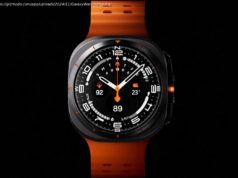Affordable, lightweight and with great optics, Canon’s new f/11 super telephoto zooms are a game changer.
Super telephoto primes have always been specialty lenses. Unless you were regularly shooting sports or wildlife, it was virtually impossible to justify the cost. Of course, a smaller sensor size makes it easier to get to the super telephoto focal lengths – essentially anything longer than 300mm – but even these lenses can still be quite expensive, especially the faster primes. Take for example Sony’s 400mm f/2.8 GM OSS for the FE mount – this excellent lens costs just shy of $12,000 / £10,500 / AU$19,500 and weighs in at a little under 3kg. Following closely behind is Nikon’s monster F-mount AF-S 600mm f/4.0G ED VR, which will set you back $12,299 / £12,599 / AU$15,999, while Canon’s rival EF-mount 600mm f/4.0L IS III USM is going to cost you even more. Of course, if you need to go longer,800mm primes are going to be even more expensive and just as heavy, if not heavier. However, Canon’s new RF 600mm f/11 IS STM and 800mm f/11 IS STM lenses are hefty neither in price nor size. They’re game changers, and showcase what can be achieved with the new mirrorless systems. Both lenses are affordable at $699 / £749 / AU$1,399 and $899 / £979 / AU$1,799 respectively and weigh just 930g and 1,260g respectively. It’s natural to question whether the cost-cutting here has come at the expense of image quality and performance, and we’re happy to report that you get plenty of bang for your buck if you choose to get either or both lenses. With these two RF lenses, Canon has made super telephoto primes are a lot more accessible to hobbyists and enthusiasts. While they’re still a little niche, there is a justification for buying them, and that’s a combination of cost and image quality. It would be a little unfair to compare the results from Canon’s 600mm and 800mm f/11 primes to more expensive glass – after all, you’re paying for superior quality, optics and performance there – but if weather-sealing isn’t a dealbreaker, then these two lenses produce some truly exceptional results. Admittedly they’re designed for use with the newer Canon EOS R5 and EOS R6 bodies, taking advantage of their superior autofocus speed and performance (particularly for sports and wildlife photography), but you’ll still get plenty of great shots with the older EOS R models too, and all of them handheld. Thankfully there’s in-lens stabilization available, and given how light they both are, you can leave the tripod behind and still shoot at slower shutter speeds. Applying the one-divided-by-focal-length law to establish the slowest ‘safe’ shutter speed for handheld photography, the 800mm’s starting point is 1/800 second and the four stops of OIS correction theoretically allows you to venture down to 1/50 second.
Домой
United States
USA — software Canon RF 600mm and 800mm f/11: are these fixed-aperture telephotos worth it?






